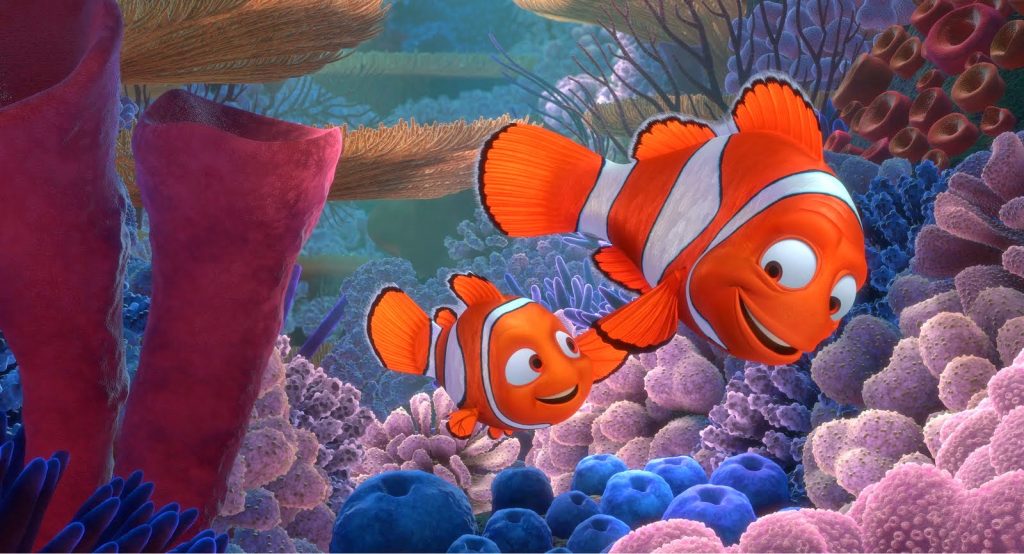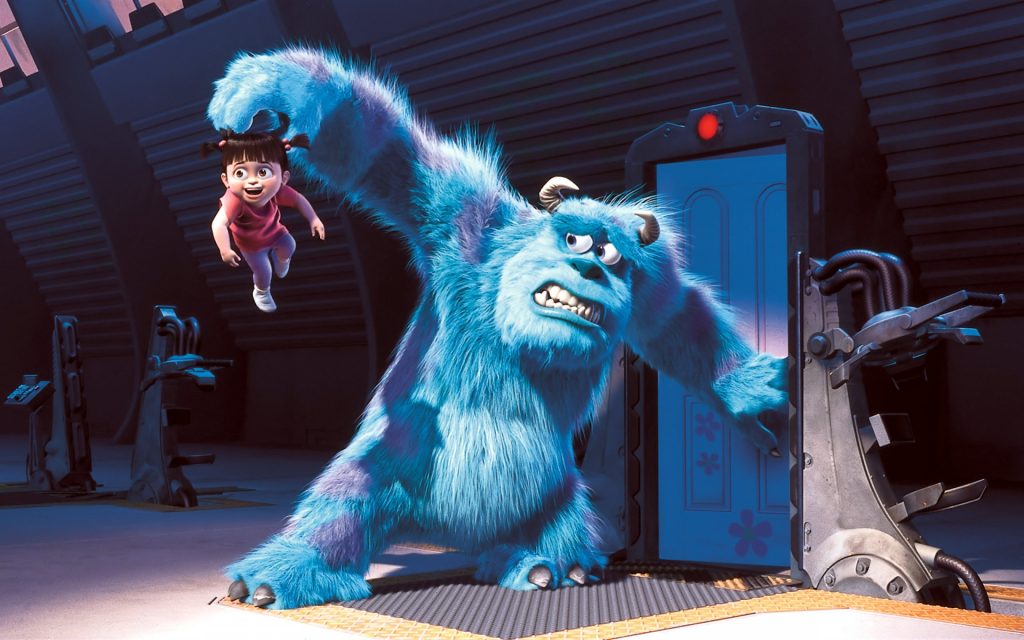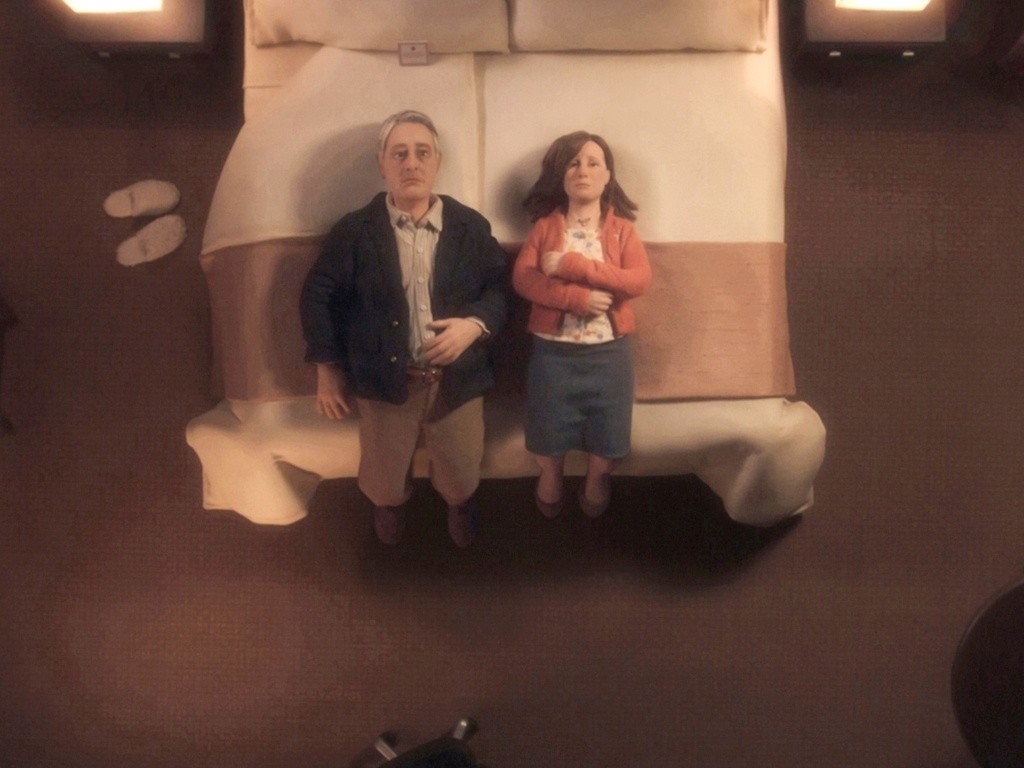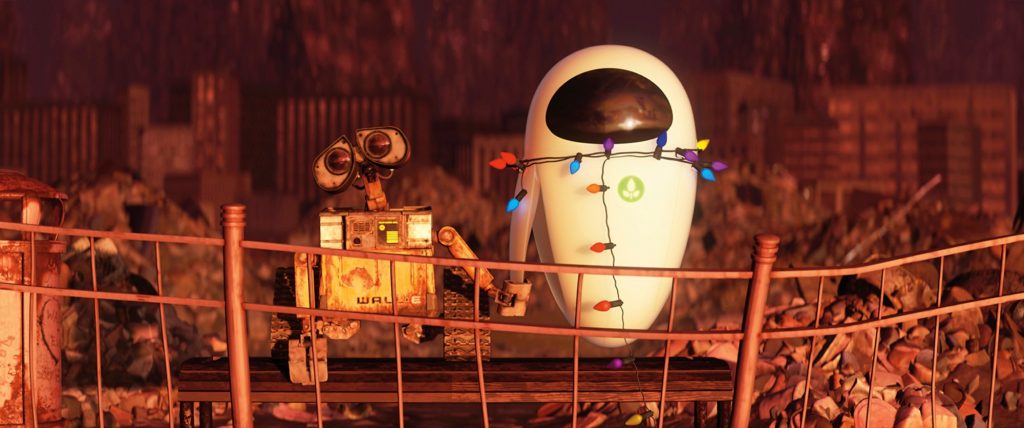 20.“Finding Nemo” (2003)
20.“Finding Nemo” (2003)
Fortunately, our worries came to naught: “Finding Dory” proved to be much more “Toy Story 3” than “Cars 2” or “Monsters University” as far as Pixar sequels go. But could you blame us for being worried? After all, the original was something close to a miracle. The story of the over-protective father (Albert Brooks) whose worst nightmare comes true when his son is taken across the ocean is a dizzyingly colorful, enormously funny story full of incredibly memorable characters and arguably Pixar’s best-ever voice cast (Brooks and co-lead Ellen DeGeneres are perfect, but we also get Willem Dafoe, Allison Janney, Stephen Root, Geoffrey Rush and Eric Bana). But at its heart, it packs as big an emotional punch as anything the studio’s made, gradually shortening the gulf between a loving but destructively neurotic father and his adventurous but vulnerable son.
 19. “Monsters, Inc.” (2001)
19. “Monsters, Inc.” (2001)
After two great “Toy Story” movies and the middlingly received (somewhat unfairly) “A Bug’s Life,” “Monsters, Inc.” was the film that suggested that Pixar would be far more than the house that Buzz built. Like “Toy Story,” this film takes up an irresistible childhood conceit — the story behind the monsters under every child’s bed or in the closet — and filled it with two of the company’s most lovable characters in Billy Crystal’s eyeball-on-legs Mike Wazowski and John Goodman’s fuzzy blue Sully, who accidentally let a supposedly deadly child, the utterly adorable Boo, into their monster’s paradise. The film’s not as narratively perfect as some of the later Pixar pics (the Yeti diversion is dead air), but it’s still gorgeously designed, has a giant heart and proves utterly satisfying. Decent-but-unnecessary prequel “Monsters University” paled in comparison, which is a testament to the strength of the original.

18. “Toy Story 3” (2010)
Coming a full decade after the the beloved “Toy Story 2,” it would have been easy for a third “Toy Story” to be a lazy retread or nostalgic phone-in, and it still would have made a billion dollars. But rather than going for a victory lap, the creative team of John Lasseter, Andrew Stanton and director Lee Unkrich switched things up the third time out, allowing time to have passed and for Andy to be heading to college. The adventures that ensue are remarkable: there’s genuine peril at times, quite a bit of darkness and some pretty deep soul-searching that makes it even more affecting to adults than its predecessors. Because these films were never really about plastic playthings — they were about childhood, a state you can really only appreciate after it has concluded and someone new is playing with your old toys.
 17. “Anomalisa” (2015)
17. “Anomalisa” (2015)
Given his formal playfulness, it maybe shouldn’t have come as a surprise that Charlie Kaufman’s second film as director would be an animated one. Still, the announcement a few years back that Kaufman was teaming with Duke Johnson for a stop-motion animated film called “Anomalisa” raised eyebrows. It shouldn’t have, though: The film (based on a 2005 ‘sound play’) is one that only Kaufman could create, with its mix of almost misanthropic existential despair and stealthy romanticism, a beating heart buried underneath its giant brain, tracking a British author (David Thewlis) in an Ohio airport hotel as he has a one-night stand with a young woman (Jennifer Jason Leigh), while everyone else in the world looks the same and sounds like Tom Noonan. It’s a story of depression and crisis, told in a way that’s both bleak and rather beautiful, with Kaufman’s familiar obsessions — self-loathing, loneliness, the fragility of life — becoming honed and heightened through its form.
 16. “Coraline” (2009)
16. “Coraline” (2009)
There’s more quality coming out of more animation houses these days, thanks in part to Portland’s Laika, a stop-motion studio who broke out with the sublime “Coraline.” Based on a book by geek idol Neil Gaiman and directed by “The Nightmare Before Christmas” helmer Henry Selick, the film focuses on the titular girl (Dakota Fanning) who escapes from her neglectful parents into another world that turns out to be more sinister than she planned. The picture is gorgeously designed (with a use of 3D that’s still among the best ever, flat in the ‘real world’ and expansive in the fantasy one, “Wizard of Oz”-style), smart, soulful, atmospheric, rich, funny, exciting and strange, and it’s only aged like a fine wine in the last half-decade. “Paranorman” and “The Boxtrolls” are both worth checking out, but Laika’s first hour remains their finest so far.
 15. “The Lego Movie” (2014)
15. “The Lego Movie” (2014)
On paper, it seemed to be a nightmarish corporate synergy-fest (it isn’t just based on a toy, but includes toy versions of superheroes!). In practice, “The Lego Movie” is a sly, subversive, giddy joy, with Phil Lord and Chris Miller topping their previous animated pic “Cloudy With Chance Of Meatballs” (which some of us are very grumpy isn’t in this list…). Spoofing ‘chosen one’ narratives as Chris Pratt’s Emmett is picked out as the last great hope against the evil Lord Business (Will Ferrell), it’s a deeply silly, meta-tastic action-comedy that still finds room for a surprising degree of pathos, not least in its secret late-game live-action gambit. Capturing a childish sense of play in a way that few had done outside of “Toy Story” but filtering it through a millennial mash-up mentality, it must figure as one of the most glorious mainstream surprises in recent memory.
 14. “Ratatouille” (2007)
14. “Ratatouille” (2007)
“Ratatouille” is something of an oddity among the Pixar canon, less because of its production history (“The Incredibles” helmer Brad Bird completely retooled the film late in production, which is par for the course at the studio), and more because it plays so much older than many of the rest of their films. Set in the world of fine cuisine, the picture targets and celebrates critics, is relatively slow paced, and draws from influences as diverse as Lubitsch and Proust. It’s auteurist, borderline-arthouse animation somehow went on to make hundreds of millions of dollars worldwide. Bird’s tale about a rat (played perfectly by Patton Oswalt) with a refined palate and culinary dreams works as a talking animal picture, a romantic comedy, a love-letter to Paris (those cityscapes!) and to food, and could only have been made by Pixar. Some of their other films might have had a broader appeal, but “Ratatouille” is truly refined.
 13. “Chicken Run” (2000)
13. “Chicken Run” (2000)
Aardman have had mixed success with features — they have four films on the list, which is pretty good, but have sometimes struggled to attract the same mix of universal acclaim and commercial success as their shorts attracted in the 1990s, especially when pushed out of their comfort zone and into CGI work. We say sometimes because of the existence of their first feature, “Chicken Run:” it’s a tremendous film, a more charming and inventive film than most with budgets many times the size. Following a group of hens who enlist the help of cocky rooster Red (a pre-decline Mel Gibson) to escape their farm when they learn they’re destined to be turned into pies, it brilliantly and evocatively channels WW2 POW movies like “The Great Escape” with a very British eccentric charm. Encompassing the immaculate design, classic physical comedy and thrilling action that characterized the Aardman shorts, it’s also more narratively well-rounded, with a finale as rousing as anything else on this list.
 12. “Persepolis” (2007)
12. “Persepolis” (2007)
The Cannes Jury Prize-winning and Oscar-nominated “Persepolis” predated the also-Cannes-and-Oscar nominated “Waltz with Bashir” by a year, but taken together, both represent the emergence, or maybe just the more mainstream acceptance, of another function of animation: to tell grown-up stories of autobiography so personal and/or painfully political that somehow they almost beg to be drawn rather than filmed. Marjane Satrapi’s film is a poignant, funny, touching and occasionally horrifying account of her childhood growing up in Tehran during the Islamic rebellion, told in simple, stark, black and white images, but it’s her eye for offbeat, humanizing detail (much of which came from her self-penned comic strip) that marked Satrapi out as a filmmaker of promise. And since then she’s made good on as such, becoming one of the liveliest and most playfully eccentric filmmakers on the international scene, though she has yet to match her debut for sheer impact and importance.
 11. “Wall-E” (2008)
11. “Wall-E” (2008)
The biggest risk that Pixar had ever made up to that point (and possibly since too) was “Wall-E,” a film that went from silent romantic comedy in its first act to finger-wagging environmental parable in its ending, and proved to be hugely entertaining in both modes. Tracking a lonely trash-collecting robot amid the fragments of a neglected civilization that only he cherishes, before he falls in love with a hi-tech probe droid and reconnects with the remnants of humanity, the film was an audacious undertaking to say the least. With much less dialogue than the wisecrackery of previous outings and a near-mute protagonist, it remains one of the studio’s most formally austere and outright satirical films. And yet Andrew Stanton‘s film is warm and funny, relying on the stunning expressiveness of Wall-E’s design (his playing with the ball and bat is a perfect example of the immaculate physics at work throughout) to tell with glimmering originality a story that ultimately employs every old-school trope in the book: an unlikely hero fights to win the hand of his lady love, and in so doing saves humanity from itself.

